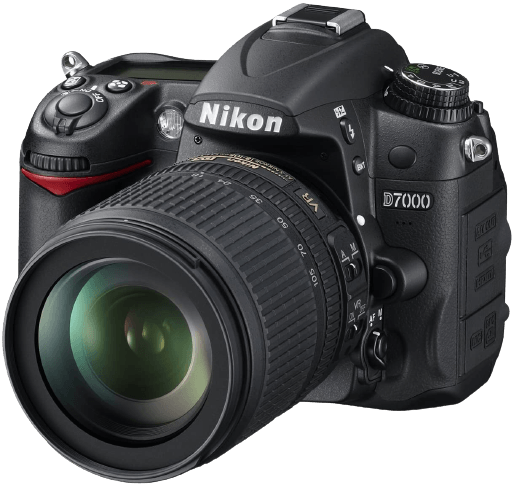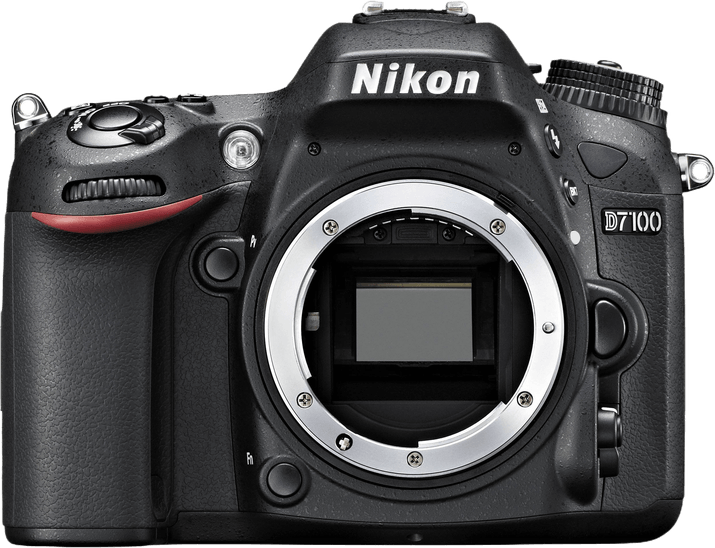Nikon D7000 vs D7100 Comparison
Nikon D7000

Nikon D7100

The Nikon D7100 emerges as the winner with a score of 65/100, while the Nikon D7000 trails behind at 56/100. Both cameras are DSLRs, announced in 2010 and 2013 respectively, and share the same launch price of $1200. They also have similar dimensions, with the D7100 being slightly larger at 136 x 107 x 76mm, and lighter at 765g compared to the D7000’s 132 x 105 x 77mm and 780g.
The D7100’s higher score indicates that it is a better camera than the D7000. It offers improved features and performance, justifying its larger size and lighter weight. On the other hand, the D7000’s lower score does not necessarily mean it is a poor camera, but rather, it may lack some of the newer features found in the D7100.
Taking these factors into account, the Nikon D7100 is a more advanced camera, making it the better choice for photographers looking for top performance. The Nikon D7000, while not as highly rated, may still be suitable for those seeking a reliable DSLR without the need for the latest features.
Nikon D7000 vs D7100 Overview and Optics
The Nikon D7100 outperforms the Nikon D7000 in optics with a score of 67/100 compared to the D7000’s 55/100. Both cameras share some common specifications, including a CMOS sensor, APS-C sensor size, Nikon F lens mount, 6 fps shooting speed, and the absence of image stabilization.
The D7100’s superior optics can be attributed to its higher megapixel count, 24.1 compared to the D7000’s 16.2. This allows for greater image resolution and detail capture. Additionally, the D7100 has an improved processor, the Expeed 3, which contributes to better image quality, color reproduction, and noise reduction. Furthermore, the D7100 has a higher DXOMARK score for the sensor at 83, compared to the D7000’s 80, which means better overall image quality and low-light performance.
The D7000, while scoring lower in optics, still offers reliable image quality with its 16.2-megapixel sensor and Expeed 2 processor. It also shares the same shooting speed and lens compatibility with the D7100, making it a suitable option for those who prioritize these features over the highest possible image quality.
In comparing the optics of the Nikon D7100 and D7000, it is clear that the D7100 offers superior image quality and performance due to its higher megapixel count and improved processor. While the D7000 may not match the D7100 in these areas, it remains a viable option for photographers who value lens compatibility and shooting speed. Ultimately, the choice between these two cameras will depend on individual preferences and priorities.
Nikon D7000 vs D7100 Video Performance
The Nikon D7000 and the Nikon D7100 have identical video scores, both receiving a 57/100. This means that there is no clear winner in terms of video capabilities between these two cameras. However, there are some differences and similarities that can be observed when comparing their video specifications.
Both cameras have Full HD video resolution and a maximum video dimension of 1920 x 1080. This indicates that they can produce high-quality videos with the same level of detail. Additionally, they both have time-lapse functionality built in, which is a useful feature for capturing long-duration events in a shortened video format.
The Nikon D7100 has a slightly higher maximum video frame rate of 30fps, compared to the 24fps of the Nikon D7000. This means that the D7100 can capture smoother and more fluid video, especially when recording fast-paced subjects or scenes. This advantage makes the D7100 more suitable for users who prioritize video quality and performance.
On the other hand, the Nikon D7000 does not have any specific advantages over the D7100 in terms of video capabilities. Both cameras share the same video score and most of their video specifications are identical. However, the D7000 may still be a suitable choice for users who are not concerned about the slightly lower maximum video frame rate, as its other video features are on par with the D7100.
Comparing the video capabilities of the Nikon D7000 and D7100, it is evident that the D7100 has a slight edge due to its higher maximum video frame rate. However, both cameras possess similar video features, making either one a viable choice for users seeking quality video performance. Ultimately, the decision between these two cameras will depend on the individual user’s priorities and preferences.
Nikon D7000 vs D7100 Features and Benefits
The Nikon D7100 outperforms the Nikon D7000 with a feature score of 59/100 compared to the D7000’s 54/100. Both cameras share some specifications, such as the absence of a touchscreen, flip screen, GPS, and Bluetooth. They both also have WIFI capabilities.
The D7100 excels with a larger screen size of 3.2 inches and a higher screen resolution of 1,228,800 dots, compared to the D7000’s 3-inch screen and 921,000-dot resolution. This improvement in screen size and resolution allows for better image preview and review on the D7100, enhancing the overall user experience.
The D7000, although scoring lower in features, still proves itself as a reliable camera. However, there are no specific areas where the D7000 surpasses the D7100, as they share many of the same features and the D7100 has improvements in screen size and resolution.
Considering the comparison of these two cameras, the Nikon D7100 stands out as the better option due to its larger screen and higher resolution. The Nikon D7000 remains a dependable choice for those who may not require the higher screen specifications of the D7100. Ultimately, the decision between these two cameras will depend on individual preferences and requirements, with the D7100 offering a slight edge in terms of features.
Nikon D7000 vs D7100 Storage and Battery
The Nikon D7100 and Nikon D7000 perform well in storage and battery. Both cameras accept SD, SDHC, and SDXC memory cards and use the same EN-EL15 battery type. Both cameras offer dual memory card slots, providing more storage capacity and flexibility. This feature makes it ideal for photographers who require ample storage or a backup option.
Neither camera offers USB charging.
The D7000 has a slightly longer battery life, offering 1050 shots compared to the D7100’s 950 shots. This gives the D7000 an edge for extended shooting sessions, although the difference is relatively small.
Considering these factors, the choice between these cameras depends on the photographer’s specific storage and battery requirements.
Nikon D7000 vs D7100 Alternatives
Still not ready to make a decision? Check out our other popular camera comparisons for inspiration:
